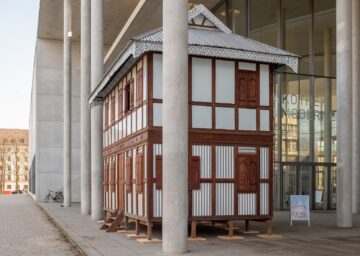Inheriting Wetness (House Dohar)
The Ganges and Brahmaputra rivers together form one of the three largest sources of water and sediment for the world's oceans. Tidal dynamics cause sedimentation during low flow in the dry season. These are inhabited in southern Bangladesh at the confluence of the Padma, Meghna and Jamuna rivers by people who draw lines to mark their territory and to pass it on to future generations. However, due to river dynamics caused in part by enormous flows of water from the Himalayas, these territories can disappear from one day to the next and the inhabitants must move on to the next solid ground.
Along the Ganges-Bramhaputra catchment area, therefore, the inhabitants have developed a flat building system of wooden frames and corrugated iron sheets that can be erected and dismantled with little effort. As the river banks erode, not only houses but also entire villages with their stores migrate. Some families have moved three to four times, others have lost the means to start over and have migrated to the slums of the cities to make a living. For the exhibition, one such prefabricated house was bought on the local market in Dohar, which now stands in the entrance area of the Pinakothek der Moderne. The building system served Marina Tabassum Architects as a model for its own projects such as the Khudi Bari, a building system that is also easy to erect and dismantle, but made of bamboo. The material is much more cost-effective and intended for people who have lost their livelihood due to water.
Opening hours: Thursday 11 until 13 o'clock
